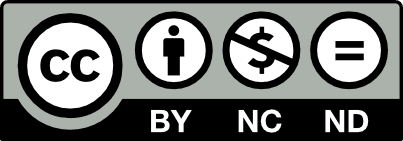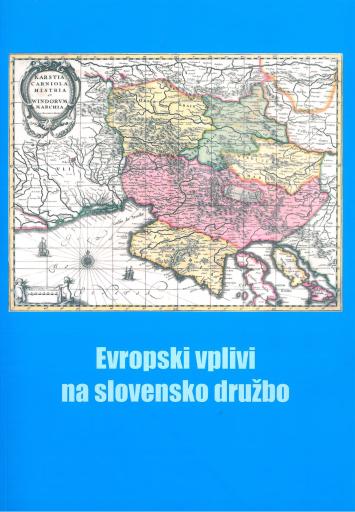/
Literatura
/
Monografije
Podobnosti in razlike med slovenskim (jugoslovanskim) in vzhodnoevropskim tipom socializma

Avtor(ji):Božo Repe
Soavtor(ji):Nevenka Troha (ur.), Mojca Šorn (ur.), Bojan Balkovec (ur.)
Leto:2008
Založnik(i):Zveza zgodovinskih društev Slovenije, Ljubljana
Jezik(i):slovenščina
Vrst(e) gradiva:besedilo
Ključne besede:politični sistem, Jugoslavija, spor z Informbirojem, socializem, samoupravljanje, totalitarizem, avtokracija, historiografija, politicai system, Yugoslavia, conflict with the Cominform, socialism, self-management, totalitarianism, autocracy, historiography
Zbirk(e):Zbirka zgodovinskega časopisa ; 35
Avtorske pravice:

To delo avtorja Božo Repe je ponujeno pod Creative Commons Priznanje avtorstva-Nekomercialno-Brez predelav 4.0 Mednarodna
Datoteke (1)

Ime:evropski_vplivi_na_slovensko_druzbo.pdf
Velikost:185.05MB
Format:application/pdf
Stalna povezava:https://hdl.handle.net/11686/file18570
Opis
Explored are differences and similarities between the Slovene (Yugoslav) type of socialism and that of East European countries. The author posits that differences between socialist countries are just as marked as differences between capitalist ones. There are also différences within individual countries and in different periods. In conclusion, the author suggests that the present widely embraced conviction that up to the 1990s thè Slovene (Yugoslav) society was a totalitarian one is hardly justified; indeed, since the 1950s it became increasingly more democratic. The position of Slovenia, as well as Yugoslavia, »in-between« the two systems and blocs shall, at least from the historiographic perspective, remain a historic fact.
Metapodatki (13)
- identifikatorhttps://hdl.handle.net/11686/35306
- naslov
- Podobnosti in razlike med slovenskim (jugoslovanskim) in vzhodnoevropskim tipom socializma
- Similarities and Differences between the Slovene (Yugoslav) and East European Types of Socialism
- avtor
- Božo Repe
- soavtor
- Nevenka Troha (ur.)
- Mojca Šorn (ur.)
- Bojan Balkovec (ur.)
- predmet
- politični sistem
- Jugoslavija
- spor z Informbirojem
- socializem
- samoupravljanje
- totalitarizem
- avtokracija
- historiografija
- politicai system
- Yugoslavia
- conflict with the Cominform
- socialism
- self-management
- totalitarianism
- autocracy
- historiography
- opis
- Avtor v prispevku prikazuje razlike in podobnosti med slovenskim (jugoslovanskim) tipom socializma in tistim v vzhodnoevropskih državah. Izhaja iz stališča, da so med posameznimi socialističnimi državami prav tako velike razlike kot med posameznimi kapitalističnimi državami. Razlike so tudi znotraj držav v posameznih časovnih obdobjih. Po navedbi podobnosti in razlik zaključi, da današnja definicija slovenske (jugoslovanske) družbe kot totalitaristične do leta 1990 ni upravičena in da se je Slovenija od petdesetih let dalje postopoma demokratizirala. ≫Vmesnost≪ Slovenije (in Jugoslavije) med dvema sistemoma in dvema blokoma bo vsaj s historiografskega stališča torej še naprej ostala zgodovinsko dejstvo.
- Explored are differences and similarities between the Slovene (Yugoslav) type of socialism and that of East European countries. The author posits that differences between socialist countries are just as marked as differences between capitalist ones. There are also différences within individual countries and in different periods. In conclusion, the author suggests that the present widely embraced conviction that up to the 1990s thè Slovene (Yugoslav) society was a totalitarian one is hardly justified; indeed, since the 1950s it became increasingly more democratic. The position of Slovenia, as well as Yugoslavia, »in-between« the two systems and blocs shall, at least from the historiographic perspective, remain a historic fact.
- založnik
- Zveza zgodovinskih društev Slovenije
- zbirka
- Zbirka zgodovinskega časopisa ; 35
- datum
- 2008
- tip
- besedilo
- jezik
- Slovenščina
- jeDelOd
- pravice
- licenca: ccByNcNd
Citirano v (2)
| Tipologija | Avtor(ji) | Naslov | Kraj | Založba | Leto |
|---|---|---|---|---|---|
| 1.01 Izvirni znanstveni članek | Horvat, Marjan | Osamosvajanje Slovenije v prizmi kulture spominjanja : vloga in pomen revije Mladina | Koper ; Milje | Zgodovinsko društvo za Južno Primorsko | 2021 |
| 1.01 Izvirni znanstveni članek | Ramšak, Jure | The contours of social criticism in late-socialist Slovenia | Ljubljana | Inštitut za novejšo zgodovino | 2018 |
Seznam literature v delu (13)
| Stran | Avtor | Naslov | Vir | Kraj | Založba | Leto |
|---|---|---|---|---|---|---|
| 409 | Vodušek Starič, Jerca | Začetki samoupravljanja v Sloveniji | Maribor | 1983 | ||
| 409 | Petranović, Branko | Istorija Jugoslavije 1918-1988 | Beograd | 1989 | ||
| 410 | Repe, Božo | Sistem ljudske demokracije v Sloveniji in Jugoslaviji | Časopis za zgodovino in narodopisje | 1988 | ||
| 411 | Prinčič, Jože | V začaranem krogu: slovensko gospodarstvo on nove ekonomske politike do velike reforme 1955-1970 | Ljubljana | 1999 | ||
| 411 | Rusinowa, Dennison | The Yugoslav experiment : 1948-1974 | LosAngeles | 1977 | ||
| 411 | Jelavich, Barbara | History of the Balkans: Twentieh Century, Volume 2. | Cambridge | 1999 | ||
| 412 | Repe, Božo | Povojna opozicija (alternativa) v Jugoslaviji in v vzhodnoevropskih državah | Borec | 1992 | ||
| 412 | Crampton, R. J. | Eastern Europe in Twentieth Century: Second Edition | London - New York | 2006 | ||
| 412 | Bideleux Robert ; Jefferies, Ian | A History of eastern Europe : Chrisis and Change | London, New York | 2007 | ||
| 414 | Sthromas, Alexander | Politrical Changes and social Development: the case of Soviet Union | Frankfurt | 1981 | ||
| 414 | Skilling Harold, Gordon | Background to the Study of Opposition in Communist Eastern Europe, Governement and Opposition | Beograd | 1987 | ||
| 414 | Koštunica, Vojislav | Opozicioni oblici delovanja u odnosu na sistem vlasti, terija I praksa realnog socializma | Beograd | 1987 | ||
| 414 | Repe, Božo | Rdeča Slovenija | Ljubljana | 2003 |
